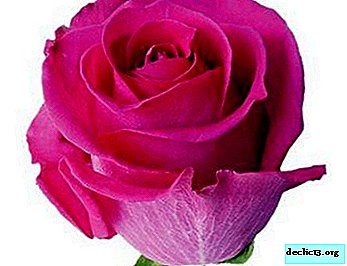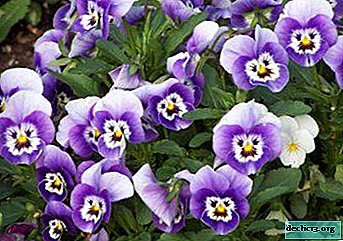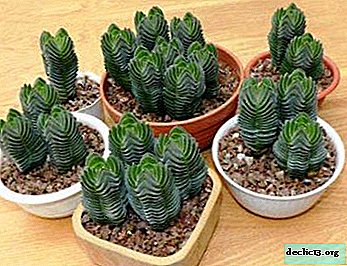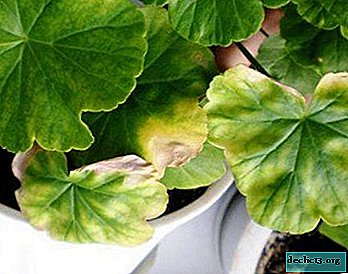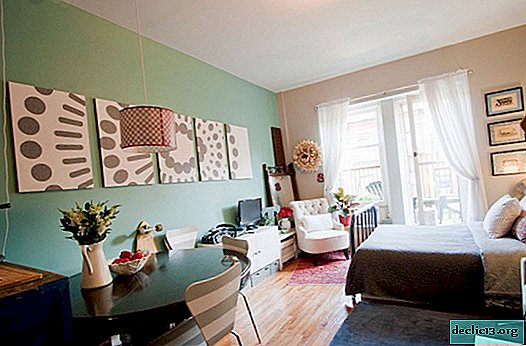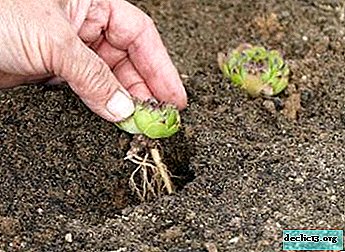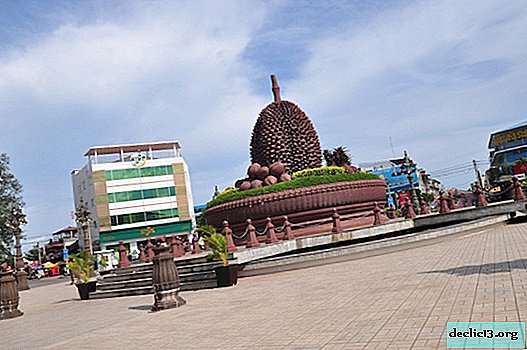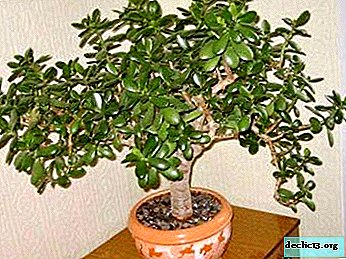Detailed description of garden hibiscus, including varieties and care. Plant photo
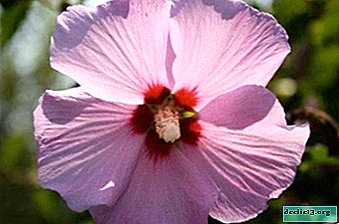 Hibiscus is a beautiful plant familiar to many as a Chinese rose. The Latin name is Hibiscus. Classification: family - malvaceous, order - malvotsvetnye, class - dicotyledonous, department - flowering. The genus of hibiscus has more than 250 species. Mostly it is a bush or a small tree. There are herbs - annual and perennial.
Hibiscus is a beautiful plant familiar to many as a Chinese rose. The Latin name is Hibiscus. Classification: family - malvaceous, order - malvotsvetnye, class - dicotyledonous, department - flowering. The genus of hibiscus has more than 250 species. Mostly it is a bush or a small tree. There are herbs - annual and perennial.
Hibiscus leaves are petiolate, seated on branches separately, notched. The flowers are large, non-double, of 5 petals, always brightly colored or white, with a distinct pestle and stamens. After pollination, a fetus is tied. It has the appearance of a five-leaved box. In each leaf many seeds ripen. The latter, depending on the type, are smooth or pubescent. The birthplace of the plant is southeast Asia.
In the open ground in the CIS countries, 3 species are grown - Syrian or treelike, hybrid or grassy, triple.
Popular varieties
Syrian or tree shrub
Other names - Syrian rose, ketmy. The habitat is the Asian continent: China, Korea and other countries of West Asia. The Latin name is Hibíscus syríacus. In open ground it grows well:

- in Russia in the Southern Federal District (Caucasian Mineral Waters, Pyatigorsk, as well as in Rostov-on-Don and the Rostov Region, subject to shelter for the winter);
- on the Crimean peninsula;
- in Moldova;
- on the south of Ukraine;
- in Central Asia.
Syrian hibiscus - deciduous shrub up to 6 m high. Forms a lush crown. The central stem and large branches at the base are thick, become thinner to the top, lignified. Young shoots are green. The foliage is thick, bright green. The leaves are large, slightly or heavily carved, depending on the variety.
The flowers are smaller than that of Chinese hibiscus. When it blooms, it acquires a diverse color, including two-color. Terry specimens are bred.
On a note. Syrian hibiscus is a national plant of South Korea.Care
The plant is photophilous. Blooms poorly in partial shade, flowers become small, inexpressive. He loves water, in drought the leaves turn yellow and fall. It responds well to pruning. Every 2-3 years you need to form a crown.
Hibiscus blooms on the shoots of this year, so they are pruned regularly to get a lot of buds. The plant can be formed as a standard tree with a crown of any shape. The optimal time for pruning is the beginning of spring or autumn.
In regions with a cool climate, Syrian hibiscus can be grown:
- as a frame culture, wintering in a bright, cool room;
- in a greenhouse or room.
Ketmya is responsive to feeding. Use complex fertilizers for flowering plants with a high content of phosphorus, nitrogen and iron.
Breeding
 Syrian hibiscus can be propagated by seeds or cuttings. For varieties with non-double flowers, the first method is the most relevant. However, there is no guarantee that the daughter plant will inherit the color of the parent. Sometimes unexpected options are obtained, including motley and two-tone ones.
Syrian hibiscus can be propagated by seeds or cuttings. For varieties with non-double flowers, the first method is the most relevant. However, there is no guarantee that the daughter plant will inherit the color of the parent. Sometimes unexpected options are obtained, including motley and two-tone ones.
Also, you can not predict the size of the flowers. It is not uncommon when they are huge in the parent plant, and in the daughter plants are much smaller and uglier. Terry varieties are propagated only by cuttings. The technology is exactly the same as that of a home Chinese rose.
Disease
Ketmya is resistant to diseases and pests. But if a diseased plant is nearby, the risk of infection is great. Syrian hibiscus diseases and their symptoms:
- Leaf fall especially from below. This is not a disease, but a human oversight. The reason is soil salting. Acidity can be adjusted by applying gypsum.
- Lack of flowering. Excessive feeding with nitrogen-containing fertilizers. Adjust the frequency of feeding, as well as their composition.
- The defeat of aphids, thrips, whiteflies, mealybugs. First aid - plant a good shower with a hose. As soon as the moisture dries, spray it with an insecticide (Akarin, Actellik, Talstar and others).
You need to know this. The most interesting varieties of Syrian roses:
- Carneus Plenus (terry flowers, medium size, fawn pink);
- Diana (snow-white large flowers with a wavy edge);
- Vayelit Ilar Double (large flowers of lilac or bluish-lilac hue with burgundy throat).
Herbaceous or hybrid perennial
Received as a result of selection. In culture since the 50s of the XX century. Bred by Russian breeder Fedor Nikolayevich Rusanov. Used North American varieties:
- Hibiscus coccineus;
- Hibiscus mouscheutos;
- Hibiscus militaris.
 The first is bright red hibiscus - a sissy, a native of subtropics. The second and third - marsh hibiscus and armed hibiscus - are resistant to frost (up to -30 ° C). 3-year-old hybrids winter well without shelter in the south of the Russian Federation, Ukraine, and the Republic of Crimea.
The first is bright red hibiscus - a sissy, a native of subtropics. The second and third - marsh hibiscus and armed hibiscus - are resistant to frost (up to -30 ° C). 3-year-old hybrids winter well without shelter in the south of the Russian Federation, Ukraine, and the Republic of Crimea.
Grassy hibiscus has huge flowers - up to 40 cm in diameter. The color is somewhat monotonous - white, raspberry, all shades of pink. Flowers can be simple, double or semi-double.
The first ones are the easiest to care for. For plants with terry and semi-double flowers, you need to provide additional shelter for the winter.
Care
The aerial part does not remain for the winter - it dies. Branches are cut at a height of 10-15 cm above the soil level, covered with dry grass and leaves. In snowy frosty winters, additional cover with fir spruce branches may be required. The plant loves watering, but can survive a little drought.
Blooms profusely to the very frosts. For young bushes, drought is fatal. In order for the bush to branch well, pinch the top of the main stems when they grow to half a meter.
Grassy hibiscus does not tolerate drafts. Plant it in the bright sun. Put a thick layer of drainage in the planting hole, pour humus and lowland peat. He also does not like excessively acidic and excessively calcareous soils.Growing
There are three ways to get a new plant:
- The seeds. Undesirable option. Only suitable if ordering quality seeds at the store.
- Cuttings.
- They are cut in June from the top of the bush. On the handle there should be 2 pairs of leaves. The lower cut is done at an angle of 45 °, the upper one is strictly horizontal. The lower pair of leaves is removed.
- A transparent cup is filled with peat mixture. A stalk is placed in it.
- Water, cover with a film, put in a bright place.
- As soon as the cuttings take root, they are transferred to a cool place.
- They plant it in the garden next spring, when the threat of freezing frost passes.
- By dividing the bush. This is the best way. Division is carried out in the spring of 1 time in 3-4 years.
Pests
Grassy hibiscus:
- ill with chlorosis (lack of iron);
- affected by aphids, whiteflies, ticks, thrips, mealybug and other insects.
In the first case, bury small iron objects under the bush or water the plant with fertilizer containing iron. For pests, use insecticides that are recommended for Syrian hibiscus (see above).
The best varieties
Youth

It throws out shoots up to 1.5 m high, leaves are yellow-green in color of three or five-notched, tulip-shaped flowers, pink with a white throat with a diameter of 10 cm. Resistance to disease and frost is high. The variety is unpretentious in care.
Pink and china

Low bush (shoots up to 1.3 m). Shoots are highly branched. Leaves on long stalks, strongly cut, with a protruding middle vein, green-yellow, as if sprinkled with a thin layer of dust. The flowers are bell-shaped, pale pink with subtle yellowness. with a white throat with a diameter of 12 cm. At the same time several pieces open.
Copper king

It forms a compact bush with a stalk height of not more than 1.2 m. The leaves are large, delicate, dark green, somewhat similar to maple. The flowers are large - up to 30 cm in diameter, light pink with bright pink-burgundy veins. The throat is burgundy. Resistance to disease and frost is high.
Triple

The Latin name is Hibiscus trionum. Often also called northern hibiscus. Grassy annual, weed, which is found in crops of cotton, alfalfa, corn, soy. The habitat is wide:
- On the territory of Russia, triple hibiscus is found in the forest-steppe and steppe regions of the European part, in the Krasnoyarsk Territory (Eastern Siberia), in the Far East, in Crimea, in the North Caucasus.
- In other countries, distributed in some regions of Ukraine, Moldova, Central Asia, the Balkans, Armenia, Africa, Australia, America.
The plant loves heat, moisture, loose sandy soil. Great honey plant. It has wide medicinal use. As decorative, it is of little value, although it can be used in mixed plantings, on alpine slides. The stems of the hibiscus ternate are straight, reach a height of 80 cm.
The leaves are not at all like the usual hibiscus. They are pubescent and divided into three parts. White flowers with faint yellowness with a dark burgundy throat, pronounced pestle and yellow fluffy stamens. The plant grows and produces fruits in less than 3 months (70 days). Fresh seeds do not germinate well, stored for up to 7 years.
Photo
The photo shows how this street tree or shrub and its flowers look in the garden, including a tree-like species of plant, hybrid and triple.
Tree-like:

Hybrid:

Triple:

Similar street plants
The Malvaceae family has more than 240 genera and 4400 plants. Most of them are tropical, but some representatives can be found in the northern latitudes. It:
- known to all: mallow or rod-rose, lavater or hutma, marshmallow;
- less known: pavonia and malope or hole.
All of these plants - herbaceous one or two year olds, grow in the garden, have quite attractive flowers, similar to malva or hibiscus.
Garden hibiscus is a beautiful fairly unpretentious plant. Provide him with the right care and wintering, and it will delight with lush flowering.

